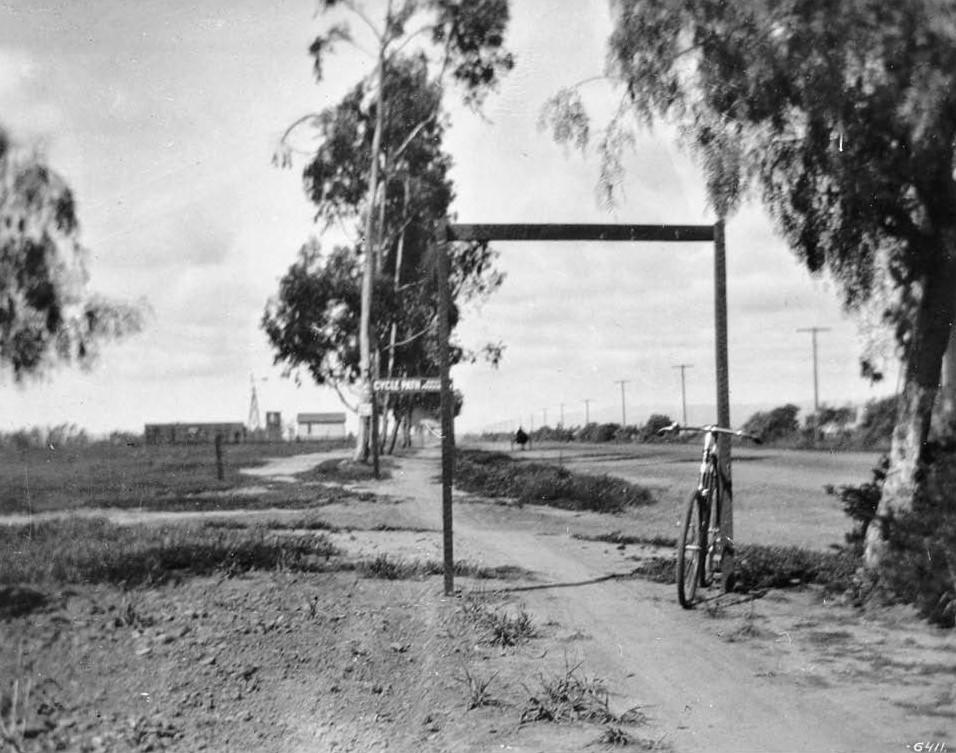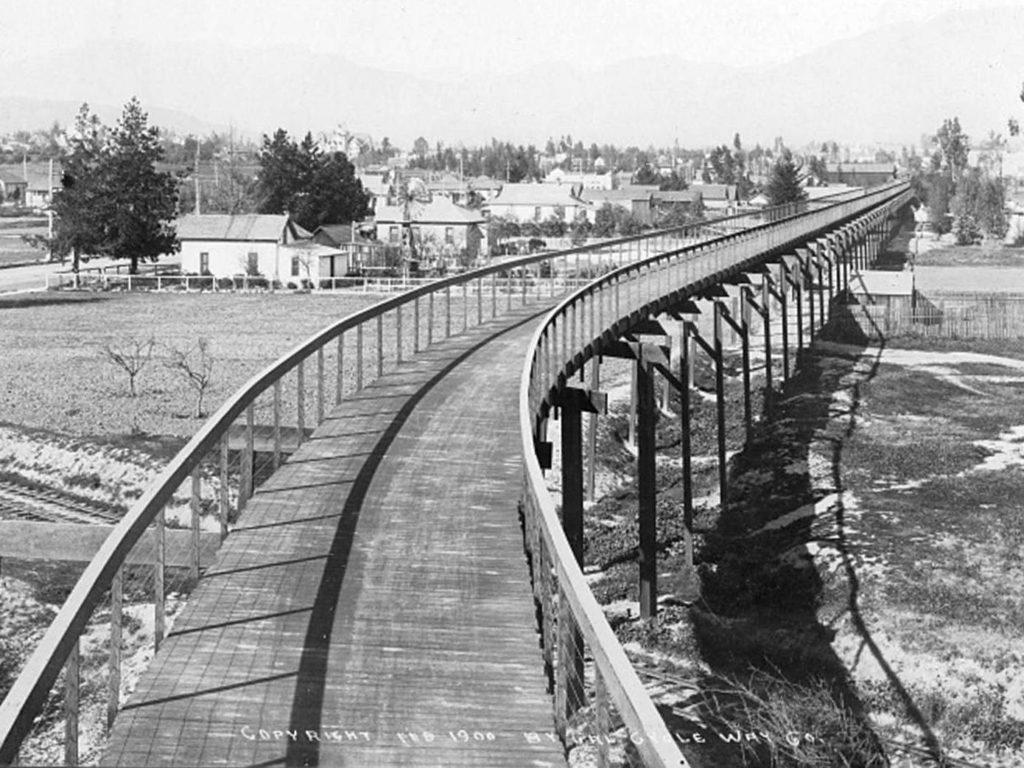Santa Monica Cycle Path
A Los Angeles Times retrospective, In the Days of the Iron Steed, written in 1930, looked back at how, on the eve of the twentieth century, the Santa Monica Cycle Path – connecting Los Angeles and Santa Monica
The sport became so popular, what with races, cycling trips and the universal use of bicycles here, that it was finally necessary to have definitely designed cycle paths. In 1896 the Santa Monica Cycle Path was organized and built through the efforts of the late Bob Lennie and Joseph Ostendorff. Their bicycle shop was located … at the corner of Fourth and Main streets and was said to be one of the best in the city. The cycle path was to be financed by selling buttons at $1 a piece and according to Ralph Hamlin, who recalls the incident well, no difficulty was experienced in raising funds for it. The path was hard surfaced, in comparison with the dusty roads that prevailed everywhere before automobiles made paving a necessity. The cycle path started at the old Rosedale Cemetery on Washington Boulevard, then a considerable distance out in the suburbs, and wound its way through picturesque countryside via what is now Palms and National Boulevard. Milestones were placed and at regular intervals [and] arches were erected over the path so that it would be reserved for the use of cyclists only. This semiprivate road was a great advantage to all – wheelmen could no longer frighten the horses! And after a rain cyclists weren’t inconvenienced with the road beds being ruined by farmers driving their cattle down them, as Tracy Q. Hall pointed out in commenting on it recently.”
In the Days of the Iron Steed (L. A. Times, Dec. 7, 1930).

The Cycle Path became the area’s best roadway:

Arches marked the route and kept buggies and wagons off the cycle path; they also carried advertising to fund it.

The Days of the Iron Steed article continues:
Another notable venture in the annals of bicycling In Los Angeles was the organization of the old California Cycleway Company, of which Horace M. Dobbins of Pasadena was president. The purpose of the company was to build and operate an elevated bicycle track from Los Angeles to Pasadena, and it is a curious fact that the right of way for the old path still exists!
With the number of wheelmen in the two cities conservatively estimated at 30,000 at the time the track was started in the ’90’s, it looked like a good investment. A toll of 10 cents was to have been charged and this would permit a cyclist to ride up and down all day if he so desired, and also included storage of his machine at either terminus until he wished to undertake the return trip.
Despite its flourishing outlook, though, the venture was doomed to early failure as far as commercial success was concerned. The track was actually only in use from the Green Hotel to the Raymond in Pasadena, though it was constructed nearly to Garvanza and the right of way extended for miles.
Paradoxically, it might be said that Mr. Dobbins, builder of the unique cycleway, was also at least partly responsible for its ultimate failure – he owned the first automobile in Pasadena! And it was undoubtedly the advent of the “horseless carriage” that wrought such changes in the character of public interest in the years following 1900. All that most people remember of the romantic days of the iron steed is the refrain of the old song, something about a girl “looking neat, upon the seat of a bicycle built for two!”

Historian Nathan Masters tells the cycle path’s story well in The Santa Monica Cycle Path: L.A.’s First Bike Lane (2013). Some photographs and the map from his article (with blue highlighting added) are on this page.